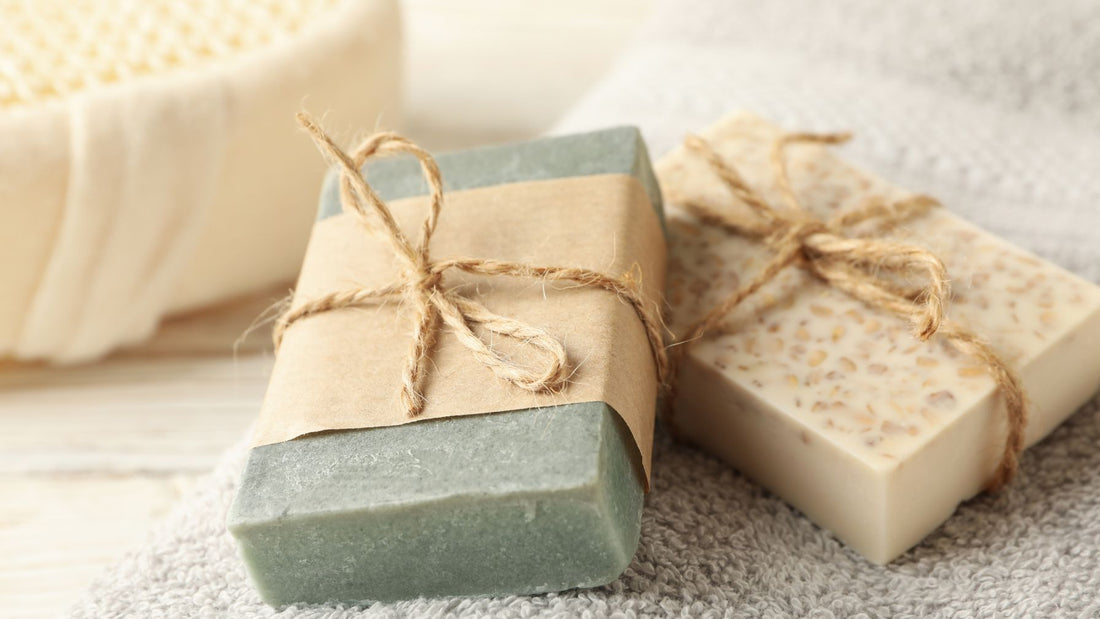It might not sound glamourous, but lard soap is a great old fashioned soap that is cheap to make, great for your skin and has lots of gorgeous big bubbles.
It feels so luxurious on your skin that you'd never know it was made with such simple and cheap ingredients.
Our lard soap recipe is packed with four different essential oils and has a bright citrus and herbal smell - no it doesn't smell like Sunday roast!
What is lard soap?
Lard soap is a very traditional way of making soap. And as we all know, Granny usually knows best!
It uses lard, which is rendered pig fat (if you are looking for a vegan or veggie friendly soap recipe we have plenty on our blog).
We've paired it with olive oil to keep this recipe super simple. If you want to simplify it even further, you can skip the essential oils. But you'll be missing the wonderful scent!
Why use lard in soap?
There is a good reason that lard soap has been popular for so long. It creates hard, long lasting bars of soap that are moisturising for your skin as it is rich in omega 3 fatty acids, Vitamin D and Vitamin E.
It's also very cheap to make in comparison with using more exotic natural oils and butters, so it's a great way to practise soap making as a beginner. If it goes wrong then you haven't wasted a lot of ingredients (but if you follow our tried and tested recipe you shouldn't go wrong!).
What does lard soap smell like?
Don't worry, it won't smell bad! In fact, it will smell fantastic! Lard actually has very little scent itself so we've chosen four essential oils to bring a herbal, citrusy aroma to the soap.
Get ready to make our lard soap recipe...
Equipment:
- Gloves
- Goggles
- Weighing scales
- Digital thermometer
- Heatproof bowl
- Plastic measuring jugs, ideally 2x 1L and 1x 2L
- Silicone spatula
- Soap mould or DIY alternative
- Stick blender
Ingredients:
- Olive oil pomace 320g | 351ml
- Lard 480g
- Water 240g
- Sodium hydroxide 105g
- Roman chamomile essential oil 3g | 4ml
- Lemongrass essential oil 10g | 11ml
- Eucalyptus essential oil 10g | 11ml
- Cedarwood essential oil 3g | 3ml
- Bejewelled green mica powder 5g
Makes 9-10 bars of natural soap
Takes 1 hour of making time, and 4-6 weeks of curing time
Method

1. Mix the sodium hydroxide solution
- Put your gloves and goggles on
- Open a window, the fumes are unpleasant
- Weigh the sodium hydroxide
- Weigh the water
- Add the sodium hydroxide to the water not the other way around
- Mix until combined
- Leave somewhere safe to cool

2. Heat the lard and olive oil
- Weigh the lard and olive oil into a heatproof bowl
- Melt over a pan of boiling water, or using short bursts in the microwave.
- Stir regularly until completely melted
- Once melted, leave to cool.
- In a separate jug, weigh and mix your essential oils.
- Weigh your mica powder and mix into the essential oils.

3. Test the temperatures
- Test the temperature of the sodium hydroxide solution. It should be between 25C and 40C.
- Leave it to cool if necessary, but don't reheat it if it's too cool.
- Test the temperature of the oil mixture. It should be between 35C and 40C.
- Leave it to cool or reheat if necessary.
- Once the temperatures are correct, add the sodium hydroxide solution to the oil mixture.

4. Blend until trace
- Stir with the hand blender, and blend with short pulses.
- Watch for the soap batter starting to thicken.
- Test for trace by dripping soap batter on the surface of the mixture. If the drips sit on the surface before disappearing, your mixture has reached trace.
- Stop blending once your soap has reached thin trace. The picture above shows a medium trace.
- Add the essential oils.
- Mix and blend a little until combined.

5. Pour into moulds
- Pour into your soap moulds (check our our range of soap moulds here)
- Tap on the work surface to get rid of air bubbles.
- Insulate with towels.
- Leave on a flat surface for 48 hours

6. Leave to cure
- Unmould your soap.
- Place bars with a space in between.
- Leave to cure for 4-6 weeks
Continue Reading:
- Like the sound of olive oil in your soap? Try our Hot Process Olive Oil Soap Recipe
- Looking for a gentle and vegan friendly soap? Give our Calendula Soap Recipe a try.
- Love the cedarwood essential oil in this recipe? Take a peek at our blog Is Cedarwood Oil Good For Hair?
- Want to learn more about soap making? Find our how to rebatch soap!
Did you try our lard soap recipe? Comment below and let us know.



